
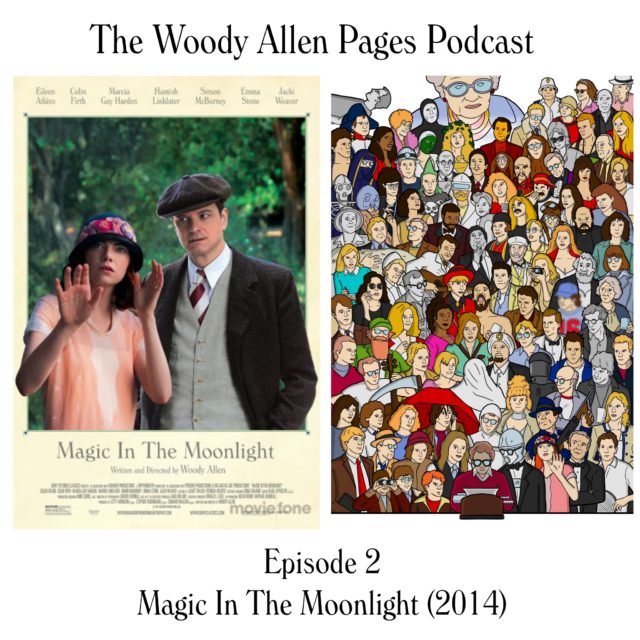
Magic In The Moonlight is the 44th film written and directed by Woody Allen, first released in 2014.
It’s the 1920s and magician Stanley Crawford is asked by an old friend to help with a task. A rich family in the south of France is being swindled by a young clairvoyant. Stanley goes to investigate, but not everything is as it seems.
Beautifully shot in the south of France, MAGIC IN THE MOONLIGHT is one of Allen’s light comedies with a deep heart. It’s an easy watch with all the lovely costumes and gorgeous back drop and charismatic movie stars. But there’s also a deeply philosophical point at the heart of it. And – I love this film.
So much more at our website – Woody Allen Pages.
Find us at:
Facebook
Instagram
Twitter
Reddit
Support us
Patreon
Buy a poster or t-shirt at Redbubble
Buy out books – The Woody Allen Film Guides
Buy Me A Coffee
You can write to us at woodyallenpages [at] gmail [dot] com

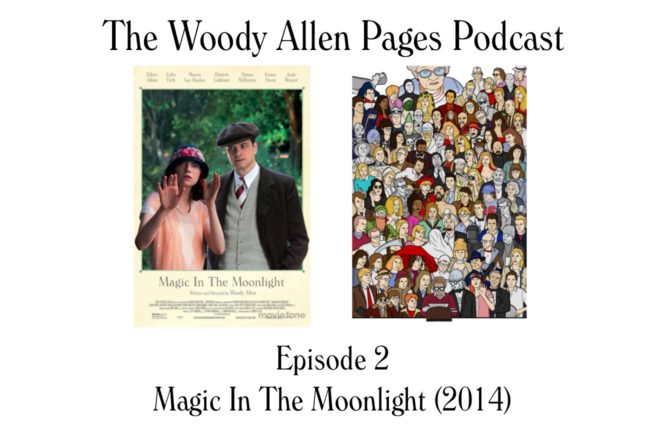
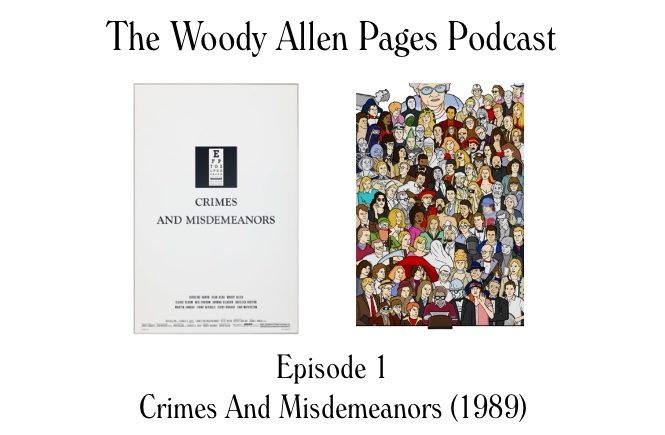
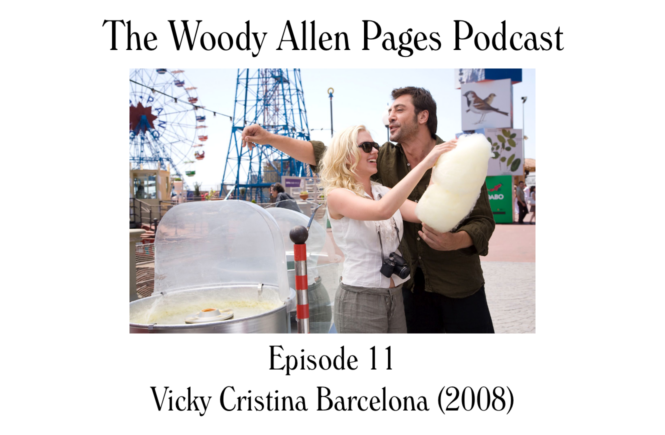
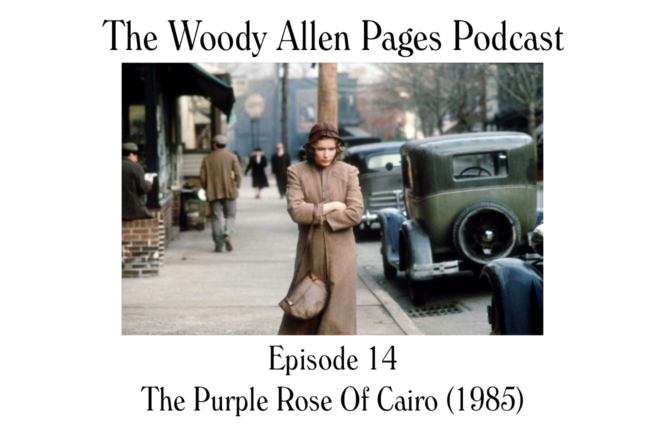

2 Comments
Episode 2 of the podcast is even better than episode 1, covering an unfairly overlooked movie that is both deep and delightful. Looking forward to Episode 3!
Hi William. Let me begin by echoing Jake D’s comments – you’re getting better with time. I really enjoyed this podcast.
This is a film I’d seen about three times prior to last week when I sat down to watch it again. Obviously I would once again be able to enjoy it’s amazing scenery, period wardrobe and fantastic soundtrack all over again but primarily I wanted to make it fresh again, as it were, when I settled back down a couple of days later to listen to said podcast.
I remember going to watch Magic In The Moonlight on its release into Polish cinemas in late August 2014 with my wife at the Kino Atlantic in Warsaw. I loved it from the start. Yes, it’s a light watch but as light watches go, it’s up there with the best of them. A great first date film? You bet. A great any date film, actually. For some reason there was a short cooking lesson before the film; I still don’t know if there was a connection or not. Right, time presses, let’s jump into the podcast.
This time around I made a few notes as I was listening, William, with the aim of being more prepared to write this piece. Hopefully I’ll have succeeded. I couldn’t help but notice that, as in the first film reviewed (the excellent, top five in my list of Woody films, Crimes and Misdemeanors) that there was an alternative title in the works. Well, maybe not as concrete as the previous film with Brothers but I couldn’t help imagining the title Rational Man. You said yourself on more than one occasion that it was written in tandem with the film he was to release the following year, Irrational Man. Maybe they were written as two sides of the same coin and both starring Emma Stone. For the record, I absolutely love her second film with Woody.
It was fascinating to listen to the back story of Harry Houdini and Chung Ling Soo. I had heard of the former, of course, but it was very intriguing to delve into the past of the latter. I’ve heard a number of people dismiss this film as something weak, slight, nothing-to-it stuff, poor compared to his other work, etc. On the contrary (and now I have my evidence)! The research you did into life in the 1920s and 30s was, how can I put it, educational? No, that’s too weak. Much more than that. You put life on the bones of a dinosaur, so to speak. Now when I think of the film I see the full story – it’s like a dinosaur in a museum being brought to life – real eyes, real skin, real intensity. By learning through your podcast about people’s interest in seances a century ago it made the characters, the storyline, the possibility that this was something, well…possible, and more than just some fantasy created by one man to pass away time. People did believe in the possibility of contacting the dead; people did travel around promising said people that they were the best in the business; and people did travel around after the people who said they were the best in the business trying to debunk them. Magic in the moonlight, you bet!
I was also drawn into the podcast about the use of Pygmalion as a trope. This has given me some homework to look further into this play as well as the film My Fair Lady. Every day is a school day. Add in the term ‘white telephone movies’ and I’m even more intrigued, even more smitten with the film as an authentic realisation of films both about the 1920s as well as those made in the 1930s. Excellent piece of detective work, William. And yes, pure escapism; even more so in these times of pandemic lockdown a hundred or so years later. These films (nearly) always had a classic Hollywood ending and Magic In The Moonlight is no exception. But isn’t that what we want? Of course it is. And we get it. Superb!
I couldn’t help but notice that you mention there were no plot holes in the film. While this may be so, I did feel that Aunt Vanessa’s recovery from what was at one stage a 50-50 situation (after all, it did get our male protagonist to pray). Yet she walks out of the hospital with just the support of a stick and an arm (if memory serves me). A remarkable recovery, you must agree. Yes, it doesn’t leave any plot holes but it deserves a mention. Having said this, I’m not sure how long she was in hospital but it doesn’t appear to be that long.
Yes, I actually watched again the scene when Stanley returns from leaving his aunt at home just before he confronts both Sophie and Howard. You’re spot on, William. The camera does linger but you’ve explained it perfectly; and it’s well executed by Firth. All these little things, these little titbits, all add up to make this an even better film than I first remembered back in the cinema.
Speaking of cinema, it truly is a film for that oh-so-loved medium. Those beautiful Côte d’Azur vistas, the unnamed and unlined roads in 1920s and 1930s cars (oh, what beautiful cars – when travel was more a part of life than just getting somewhere in the fastest time possible). The costumes, oh the costumes! Hats off to Sonia Grande and her team for excellent work indeed. The music, too, is spot on. Whenever I listen to Woody soundtracks I’m always reminded of the part in Eric Lax’s excellent Start To Finish (a true cinephile’s dream) when he focuses on the music and how Woody selects the songs for each scene. What I wouldn’t give to be a fly on that wall.
“Let me live ‘neath your spell
Do do that voodoo that you do so well”
Ah, oui, en effet !
Right, from the magic of the French Riviera to a coup d’état in San Marcos, here we come…